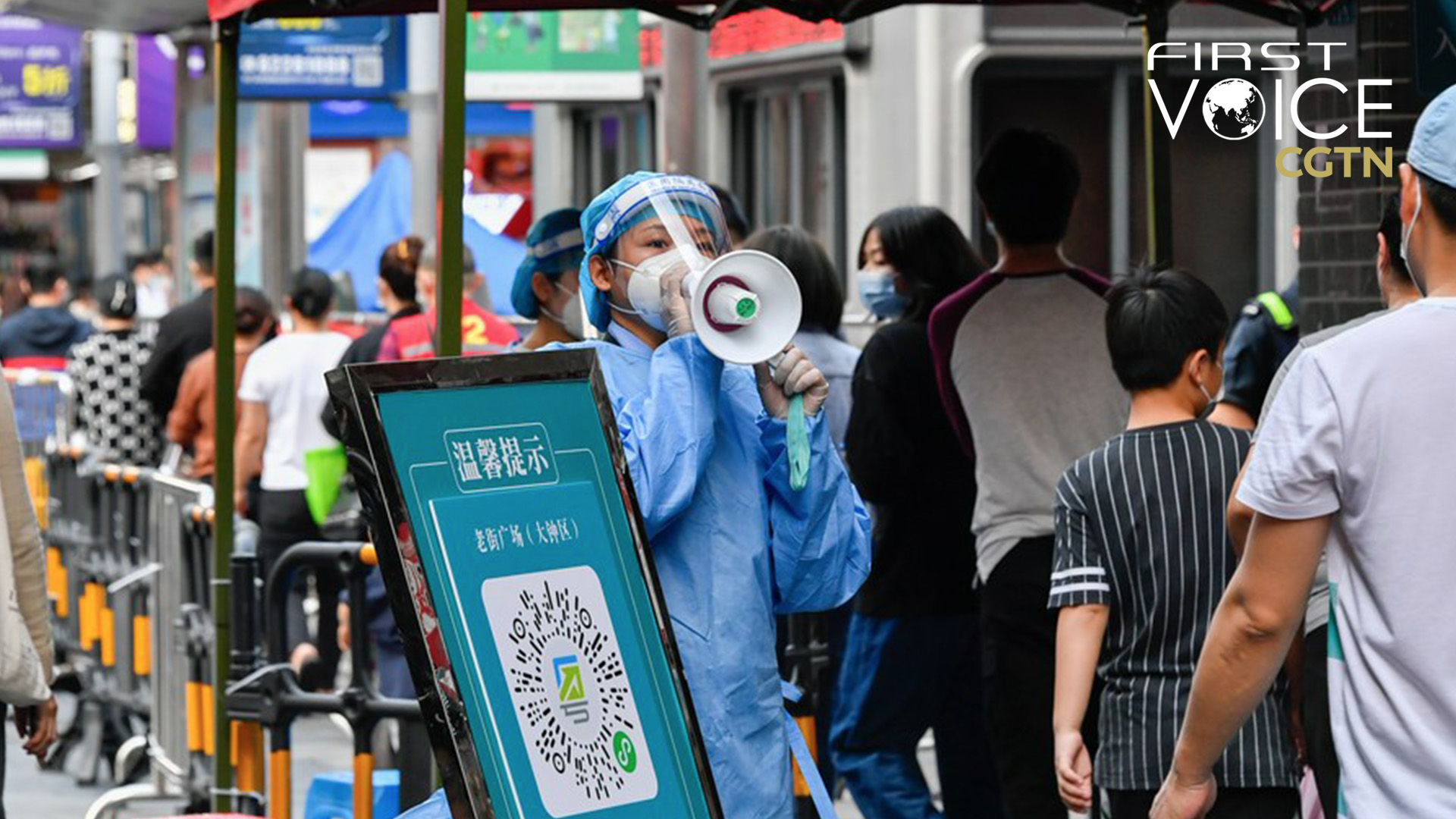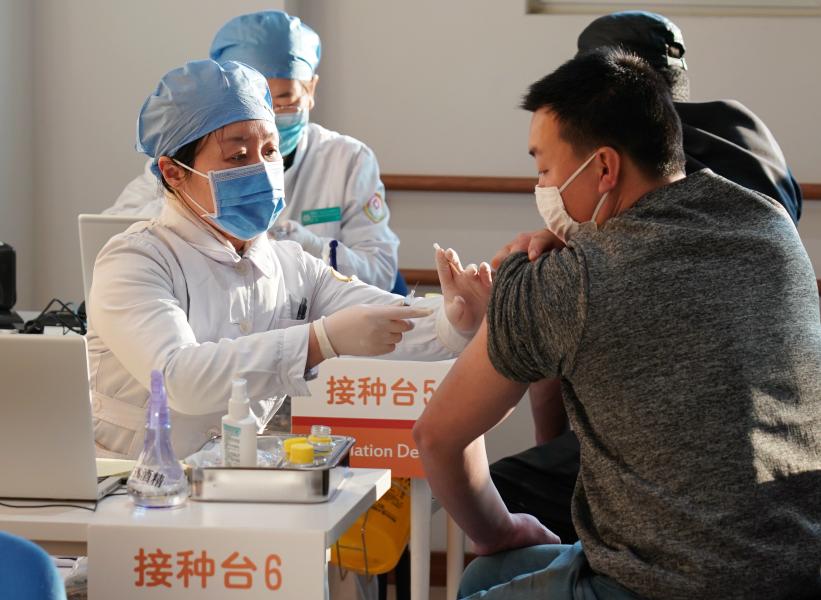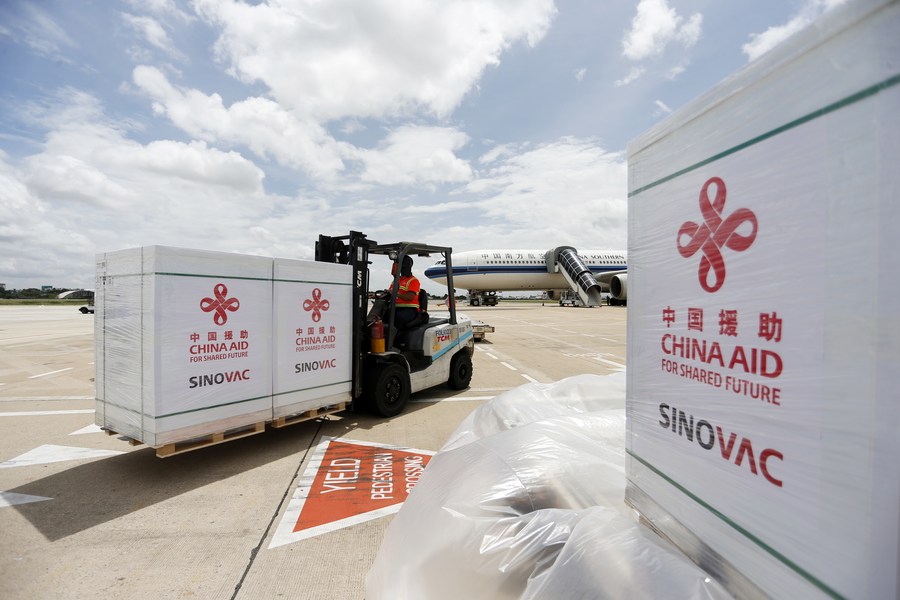
Editor's note: CGTN's First Voice provides instant commentary on breaking stories. The daily column clarifies emerging issues and better defines the news agenda, offering a Chinese perspective on the latest global events.
China has adjusted its response to COVID-19 prevention and control in recent weeks, keeping the measures science-based, targeted, and more effective for the evolving ground situation.
In line with this approach and in yet another major policy shift, China announced it will downgrade COVID-19 management from Class A to Class B infectious disease while resuming passport, visa issuance and easing border-entry policies starting on January 8, 2023. It also changed the Chinese name of the disease from "novel coronavirus pneumonia" to "novel coronavirus infection," reflecting its reduced threat.
China's decision, based on a scientific assessment of the ground situation and building on the effective COVID-19 management over the past three years under the country's "dynamic zero-COVID" approach, has, again, drawn widespread criticisms from a section of the Western media outlets, and also the Western political and intellectual circles, same as the previous "dynamic zero-COVID" policy.
This group stands consistent with its criticism of China – "Come hail or storm, China can never be right" seems to be their motto. When Beijing pursued the dynamic zero-COVID policy over the past three years, they were calling for China to reopen. Nonetheless, now that China has reopened by easing its COVID-19 measures, they are quick to spread panic with their sensational commentary, even claiming that Beijing's dynamic zero-COVID policy failed, which is far from the truth.
Media coverage has ranged from comparing China's latest COVID-19 surge to a "catastrophe" that could "put the global economy at risk" to scaremongering over the rise of "new coronavirus mutants." These claims are unfounded and go against scientific observation. Even before the current COVID-19 surge in China, many mutant variants of the virus have emerged and spread in various parts of the world but that hasn't stopped the rest of the world from opening up.
Many reports have also questioned the efficacy of Chinese-made vaccines, without any scientific evidence, of course, blaming the Chinese authorities for not allowing the "more effective" Western mRNA vaccines.
The collective experience in most countries including the U.S. and European nations, irrespective of which vaccinations have been used by their respective population, has shown that vaccination couldn't stop the spread of new mutant strains of coronavirus. What it has done though is effectively diluted the impact of the virus on patients.

People are inoculated with the COVID-19 vaccines at a healthcare center in Honglian Community in Xicheng District of Beijing, capital of China, Jan. 3, 2021. /Xinhua
People are inoculated with the COVID-19 vaccines at a healthcare center in Honglian Community in Xicheng District of Beijing, capital of China, Jan. 3, 2021. /Xinhua
Contrary to the relentless Western disinformation campaign, China's dynamic zero-COVID policy provided maximum protection to people's lives and health, minimized the pandemic's impact on socioeconomic development, and bought precious time for understanding the virus based on science, for research and development of vaccines, anti-viral drugs and therapeutics, and for vaccinating more people nationwide.
According to the latest official data, China has administered over 3.4 billion doses of COVID-19 vaccines nationwide with over 90 percent of its 1.4 billion population fully vaccinated. Over 87 percent of people over the age of 60 fully vaccinated. Meanwhile, China has rolled out the second booster shot with 13 types of COVID-19 vaccines approved for the purpose.
Beyond its own borders, China has also led pandemic preparedness efforts across the world, particularly in developing countries. It followed a policy to make COVID-19 vaccines "a public good."
As of May, China supplied over 2.2 billion doses to more than 120 countries and international organizations. It also launched joint production plants or transferred vaccine-making technologies to over 20 countries, resulting in an annual manufacturing capacity of more than one billion vaccine doses overseas.
This stands in stark contrast to many Western countries such as the U.S., UK, Canada etc., which were accused of stockpiling vaccines leading the WHO to warn of a rich-poor vaccine divide.
Despite their own dismal track record in COVID-19 prevention and control, the West has politicized the pandemic to discredit the Chinese government at every stage of the outbreak. Yet, the truth is there for everyone to see.
The figures speak for themselves, with the number of COVID-19 deaths reported in China, a fraction of the horrifying numbers in the U.S. According to the WHO data released on December 23, China had 31,585 deaths, including the death toll from Hong Kong, Macao and Taiwan region, due to COVID-19. In contrast, the U.S., with a quarter of China's population, has reported over a million deaths.

An airport worker transports packages of Sinovac COVID-19 vaccine at Phnom Penh International Airport in Phnom Penh, Cambodia on Oct. 14, 2021. /Xinhua
An airport worker transports packages of Sinovac COVID-19 vaccine at Phnom Penh International Airport in Phnom Penh, Cambodia on Oct. 14, 2021. /Xinhua
Over the past three years, the Chinese government has placed people and their lives first in its COVID-19 response and formulated the dynamic zero-COVID policy that best served the interests of the vast majority of the Chinese, based on China's national realities. China has achieved the effective results at a minimum cost. But as the nature of the virus and pandemic changed on the ground, China was also prompt to adjust its COVID-management strategies based on the evolving realities.
As Chinese Foreign Ministry Spokesperson Mao Ning said last week, "Currently, we are adapting our COVID-19 response measures to the new developments in the epidemic, so as to better coordinate epidemic response and socioeconomic development. We believe that, with the Chinese people's joint efforts and solidarity, we will usher in a new phase of steady and orderly economic and social development."
China has maintained that it's ready to work with the international community to deepen solidarity and cooperation, jointly address the COVID-19 challenge, make greater efforts to protect people's life and health, promote sound recovery of the world economy, and advance the building of a global community of health for all.
The West is trying to score political points by ignoring the successes of China's dynamic zero-COVID policy and spreading disinformation about the latest surge, which doesn't help with the global economic recovery that would require China's cooperation. China is willing to take the first step. Only time will tell if the West, and particularly the U.S., see the light and reciprocate.
(If you want to contribute and have specific expertise, please contact us at opinions@cgtn.com. Follow @thouse_opinions on Twitter to discover the latest commentaries in the CGTN Opinion Section.)